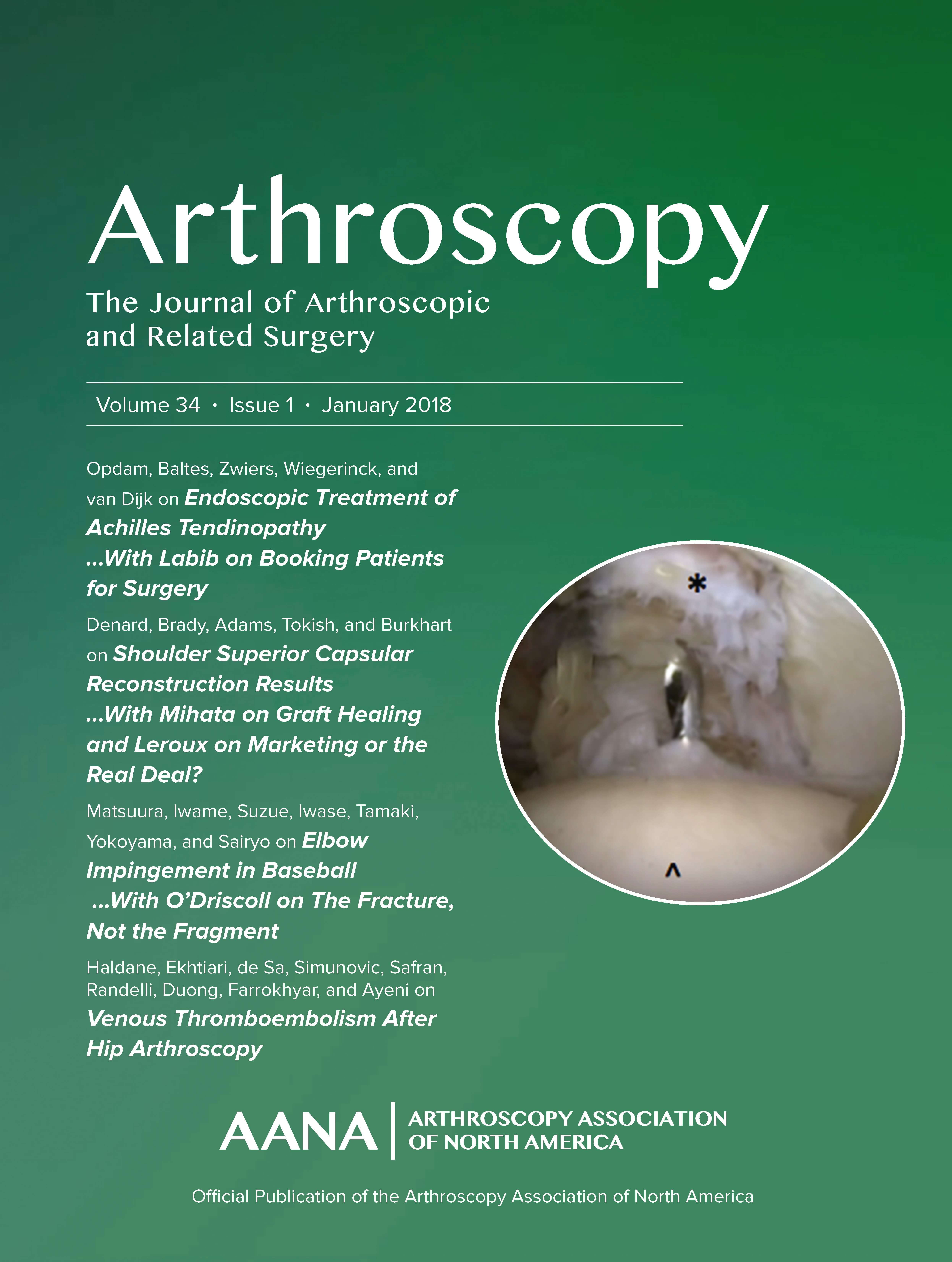
Percent tunnel widening reduced with cartilage fragment insertion within graft in ACL reconstruction

Percent tunnel widening reduced with cartilage fragment insertion within graft in ACL reconstruction
The Effect of Cartilage Fragments on Femoral Tunnel Widening After Anterior Cruciate Ligament Reconstruction: A Prospective Randomized Controlled Study
Arthroscopy. 2018 Jul;34(7):2218-2227. doi: 10.1016/j.arthro.2018.03.011Did you know you're eligible to earn 0.5 CME credits for reading this report? Click Here
Synopsis
116 patients scheduled for anterior cruciate ligament reconstruction were randomized to an autologous hamstring tendon graft with or without supplemental augmentation, with cartilage fragments sutured within the femoral side of the graft. The purpose of this study was to determine if augmentation with cartilage fragments led to reduced femoral tunnel widening after 2 years. MRI assessment of the g...
To view the full content, login to your account,
or start your 30-day FREE Trial today.
FREE TRIAL
LOGIN
Forgot Password?
Explore some of our unlocked ACE Reports below!

Learn about our AI Driven
High Impact Search Feature
Our AI driven High Impact metric calculates the impact an article will have by considering both the publishing journal and the content of the article itself. Built using the latest advances in natural language processing, OE High Impact predicts an article’s future number of citations better than impact factor alone.
Continue



 LOGIN
LOGIN

Join the Conversation
Please Login or Join to leave comments.